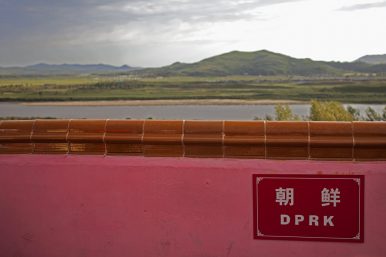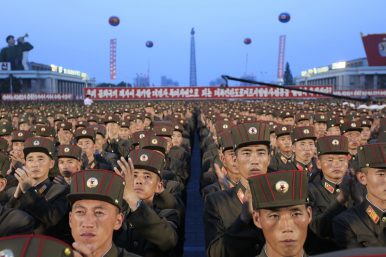In his seminal paper, Computing Machinery and Intelligence, Professor Alan Turing
During the 2016 World Economic Forum in Davos, Professor Klaus Schwab, Founder and Executive Chairman of the World Economic Forum, observed:
Previous industrial revolutions liberated humankind from animal power, made mass production possible and brought digital capabilities to billions of people. This fourth industrial revolution is, however, fundamentally different. It is characterized by a range of new technologies that are fusing the physical, digital and biological worlds, impacting all disciplines, economies and industries, and even challenging ideas about what it means to be human.
The first industrial revolution started in England towards the end of the 18th century with the use of steam power and revamping of the textile industry through mechanisation. The second revolution began a century later and culminated in early 20th century; it was driven by electricity and a cluster of inventions including the internal combustion engine, the aeroplane and moving pictures The third industrial revolution, which was started in early 1970s, was basically digital in nature—it involved application of electronics and information technology to enhance production, and centred around concepts such as mass customisation and additive manufacturing (for instance, 3D printing) whose applications are yet to be explored fully. The fourth industrial revolution is seen as an upgrade on the third one and is noted for a mix of technologies across biological, physical and digital worlds.
Twelve Key Emerging Technologies
3D Printing. Advances in additive manufacturing, using a widening range of materials and methods; innovations include 3D bioprinting of organic tissues.
Advanced materials and nanomaterials. Creation of new materials and nanostructures for the development of beneficial material properties, such as thermoelectric efficiency, shape retention and new functionality.
Artificial intelligence and robotics. Development of machines that can substitute for humans, increasingly in tasks associated with thinking, multitasking and fine motor skills.
Biotechnologies. Innovations in genetic engineering, sequencing and therapeutics, as well as biological computational interfaces and synthetic biology.
Energy capture, storage and transmission. Breakthroughs in battery and fuel cell efficiency; renewable energy through solar, wind, and tidal technologies; energy distribution through smart grid systems, wireless energy transfer and more.
Blockchain and distributed ledger. Distributed ledger technology based on cryptographic systems that manage, verify and publicly record transaction data; the basis of "cryptocurrencies" such as bitcoin.
Geoengineering. Technological intervention in planetary systems, typically to mitigate effects of climate change by removing carbon dioxide or managing solar radiation.
Ubiquitous linked sensors. Also known as the "Internet of Things". The use of networked sensors to remotely connect, track and manage products, systems, and grids.
Neurotechnologies. Innovations such as smart drugs, neuroimaging, and bioelectronic interfaces that allow for reading,communicating and influencing human brain activity.
New computing technologies. New architectures for computing hardware, such as quantum computing, biological computing or neural network processing, as well as innovative expansion of current computing technologies.
Space technologies. Developments allowing for greater access to and exploration of space, including microsatellites, advanced telescopes, reusable rockets and integrated rocket-jet engines.
Virtual and augmented realities. Next-step interfaces between humans and computers, involving immersive environments, holographic readouts and digitally produced overlays for mixed-reality experiences.
[ Source: The 12 emerging technologies listed here are drawn from World Economic Forum Handbook on the Fourth Industrial Revolution ]
Understanding the Technology Risks Landscape
The seeds of the fourth industrial revolution have already been sowed. They are seen by major transformations across spheres of human activities; scientific breakthroughs and discoveries in the fields of artificial intelligence, robotics, 3D printing, big data, the web of things, and biogenetics. These developments bring science fiction to life.
The fourth industrial revolution provides opportunities and threats to our way of life. The benefits are potentially numerous, and in many cases unknown since they will be the result of forthcoming advances in science and technology. However, the changes will not necessarily be linear , the pace of change is even harder to predict,
The emerging technologies of the Fourth Industrial Revolution (4IR) will transform the world in many ways – some that are desirable and others that are not. The extent to which the benefits are maximized and the risks mitigated will depend on the quality of governance – the rules, norms, standards, incentives, institutions, and other mechanisms that shape the development and deployment of each particular technology.
The fourth industrial revolution is upon us. These developments hold great promise to make life better for everyone and to generate new wealth. However, they also bring along major concerns about transformations in human activity. Given that this industrial revolution would generate profound political, economic and social changes. Many of these are imminent. Some of the concerns are :
How are governments to prepare, manage, and respond to the developments associated with the fourth industrial revolution?
What will the government of the future look like, how will it fulfill its core functions – broadly defined as, to act for the public good
What will be its role in forging pathways into the next era?
In the public sector, what sort of impact will these developments have upon the way it is organized and how it functions?
What will all of these changes mean for government, governance and the concept of democracy?
There is also the possibility, that the new technologies are going to be used, abused, and adapted by political fanatics, terrorists, or criminal organizations. Additionally, the possibility also exists that government itself will use these new technologies towards impinging on the natural right of citizens. There is little doubt that governments are soon going to have to
grapple with some very serious challenges.
Government Challenges: The Economy and the Labour Force
The development of automation enabled by technologies including robotics and artificial
intelligence brings the promise of higher productivity (and with productivity, economic
growth), increased efficiencies, safety and convenience. But these technologies also raise
difficult questions about the broader impact of automation on jobs, skills, wages and the
nature of work itself. Many activities that workers carry out today have the potential to be automated. Unemployment and underemployment are high around the world.
According to MIT Sloan School of Management economists Erik Brynjolfsson and Andrew McAfee, the revolution is likely to increase inequality in the world as the spread of machines increases unemployment and disrupts labour markets. According to Schwab, "in the future, talent, more than capital, will represent the critical factor of production, giving rise to a job market increasingly segregated into low-skill/low-pay and high-skill/high-pay segments, which in turn will lead to an increase in social tensions".
Even while technologies replace some jobs, they are creating new work in industries that
most of us cannot even imagine, and new ways to generate income. One-third of new jobs
created in the United States in the past 25 years were types that did not exist, or barely
existed, in areas including IT development, hardware manufacturing, app creation, and
IT systems management. Digital technology also can enable new forms of entrepreneurial activity. Workers in small businesses and self-employed occupations can benefit from higher income earning opportunities. A new category of knowledge-enabled jobs will become possible as machines embed intelligence and knowledge that less-skilled workers can access with a little training.
John Chambers, Chairman CISCO said that about 40% of companies that exist today will cease to be relevant. Replacing humans with robots in manufacturing is a trend that we can’t stop or avoid, but we can be better prepared by being open to learning new skills. Amazon had 30,000 robots working for it. To put that in context, Amazon only has 90,000 humans working in its warehouses. As of today, one in every four full‐time Amazon warehouse workers... is a robot. The creation of new jobsare mainly in more specialised areas such as computing, maths, architecture and engineering There certainly would be an increase in demand for high‐skill jobs. Driverless cars, for instance, will obviate the need for drivers but require a lot of smart coders who can make such cars ply the roads in different parts of the world safely. India would need to look at this issue from both a policy perspective as well as a social perspective keeping in mind to balance both the improvements brought about by the fourth industrial revolution as well as the wants and needs of its own citizens.
More than half the world’s population is still offline, limiting the potential to benefit from digital Rapid technology adoption can unlock huge economic value, even as it implies major
need for retraining and redeployment of labor. In India, for example, digital technologies provide the foundation for many innovations that could contribute $550 billion to $1 trillion of economic impact per year in 2025. However, the value of digitization that is captured depends on how many people and businesses have access to it. More than four billion people, or over half of the world’s population, is still offline. About 75 percent of this offline population is concentrated in 20 countries, including Bangladesh, Ethiopia, Nigeria, Pakistan and Tanzania, and is disproportionately rural, low income, elderly, illiterate, and female. The value of connecting these people is significant, and as they enter the global digital economy, the world of work will transform in fundamental ways and at an unprecedented pace. Access to the technology alone is not enough; even in countries where a large majority of the population has access, the literacy and skills needed to capture digital gains are sometimes limited.
How to positively affect the future of work
The disruptions to the world of work that digital technologies are likely to bring about
could pose significant challenges to policy makers and business leaders, as well as
workers. There are several solution spaces to consider:
Evolve education systems and learning for a changed workplace.
Determine how the private sector can drive training.
Create incentives for private-sector investment to treat human capital like other capital.
Explore public-private partnerships to stimulate investment in enabling infrastructure.
Rethink incomes.
Rethink transition support and safety nets for workers affected.
Embrace technology-enabled solutions.
Focus on job creation.
Innovate how humans work alongside machines
Capture the productivity benefits of technology.
With rapid developments in technology, it is clear that there will be significant impacts on the economy, on the labour force, and on the ways people work within various sectors of activities. The concept of the demographic time bomb, which has now been debated for years, suggests that as the population ages, there is not going to be enough workers to sustain high economic growth. Countries may even experience labour shortages because of ageing demographics of developed countries. At the same time there is an explosion of young population in countries like India, African continent and some other countries. Technological breakthroughs in the fields of artificial intelligence and robotics will potentially lead to firms requiring less human labour. The result of this economic transformation will mean higher levels of unemployment and a larger pool of unused or under used labour. Widespread 3D printing is like to dramatically restructure manufacturing. At its 2016 meeting, the World Economic Forum estimated that five million jobs across 15 major economies would be lost before 2020 because of the fourth industrial revolution The fourth industrial revolution could represent major economic upheavals, with many social consequences unseen by society in decades, if ever. Such consideration warrants further attention, public debate, and possibly eventual action by government.
Other related issues to consider would include education and post-secondary education, labour market training, etc. The fourth industrial revolution raises multiple policy questions, most notably in areas relating to the economy, economic development and the labour force.
The fourth industrial revolution could lead to a more effective, a leaner and cheaper government. Governments may be able toprovide more and better services for less. The fourth industrial revolution could, thus, lead to improved policymaking and policy, increased effectiveness and efficiency and better programs and services for citizens.
There are many risks that challenge this optimistic scenario :
Could put governments and public services under strain
Government services will be needed more, especially to address rising wealth inequalities.
The welfare state will be under heavy pressure due to existing trends such as population ageing and new possible realities such as high unemployment and increased welfare needs.
Governments will still be relied upon to deliver key services such as healthcare, education and welfare.
The demand for government services will be high, but public authorities may not have the financial capacity to deliver the goods due to slow growth.
What are the likely impacts of the fourth industrial revolution on our institutions, and democratic practices? The fourth industrial revolution, if not managed, has the potential to generate serious political, economic and social upheavals. The fourth industrial revolution could benefit developing countries via technology transfers, but it could also exacerbate many of the political, economic and social tensions that these countries face.
We face a pressing governance challenge if we are to construct the rules, norms, standards, incentives, institutions and other mechanisms that are needed to shape the development
and deployment of these technologies. How to govern fast-developing technologies is a complex question: regulating too heavily too quickly can hold back progress, but a lack of governance can exacerbate risks as well as creating unhelpful uncertainty for potential investors and innovators. Currently, the governance of emerging technologies is patchy: some are regulated heavily, others hardly at all because they do not fit under the remit
of any existing regulatory body.
The role of the state will actually become more important even as the center of gravity shifts to the corporate sector. In a world deeply dependent on technology, those who hold a tight grip on it will invariably wield a tremendous amount of power.It is foreseeable that in the era of the fourth industrial revolution, the state’s influence will progressively be eclipsed by those companies A significantly weakened state coupled with a greatly empowered corporate sector can create a serious problem. This is because the corporate sector is accountable only to shareholders and driven foremost by profits. So when technological unemployment hits, it is not incentivized to employ those workers made redundant by new technology. Only the state – through its exclusive use of monetary and fiscal policies – will be able to step in to stimulate demand and generate employment. Even if the state were unable to create jobs, it can at least help the poor and weak through its social programs. While the corporate sector does help the needy at times, only the state retains the policy tools and strategic planning that can prevent the emergence of a persistent underclass.
Apart from that, the state will also be needed to provide security. The fourth industrial revolution has the potential to destabilize societies and unsettle established institutions. Digital vulnerabilities can also lead to a spike in cyber-attacks. Whether it is fending off terrorists or hackers, the state’s role in keeping us safe will actually become more important. While private enterprises do perform a number of ancillary security functions, public safety and national defense still rest principally with the state. There are good reasons why these national priorities are public goods and it is important to bear them in mind as we enter the era of the fourth industrial revolution.
India
With a population of more than 1.3 billion predicted to become the world’s youngest population by 2022. We have to position ourselves advantageously for new things to come. Historically, in 1600, India contributed more than 22% of the world’s GDP, which plummeted to about 4% in 1990 before economic reforms bought it up to 6.8%. At the time of the first industrial revolution, with the British Empire’s mechanisation of the textile industry, India a British colony, paid a stiff price, as millions of weavers were replaced by machines. India has remained behind the curve on the second revolutions as well. We did much better with the third revolution and should do even better on the fourth. Currently the fourth industrial revolution may be the last thing on the minds of most Indians. India has other issues which it is grappling with ‐ bridging the infrastructure gap, enabling electricity and sanitation in our villages, bridging the digital divide and improving the last mile connectivity across rural areas. We are also working to harness human capital through skill development of the one million youth joining the workforce every month. The Government over the past two years has been on a mission mode with the launch of ambitious initiatives like Make in India, Digital India, Skill India, Smart Cities and Start up India. While such initiatives get under way, and begin to solve some of the big challenges for us namely health, education and skilling, housing and basic amenities like electricity; it is wise to keep a sharp eye on future technologies and adopt those that could significantly accelerate impact.
In India, for example, Google is rolling out the Internet Saathi (Friends of the Internet) program in which rural women are trained to use the Internet, and then become local agents who provide services in their villages through Internet-enabled devices. The services include working as local distributors for telecom products (phones, SIM cards, and data packs), field data collectors for research agencies, financial-services agents, and paratechnicians who help local people access government schemes and benefits through an Internet-based device. Loss of low-end jobs is where India, which is known for a very large low skilled or unskilled youth population, is likely to face severe challenges.
In India, where more than 60 per cent of population still don't have access to basic amenities, lack potable water and toilets, live in one-room huts with no electricity and is exposed to all sorts of pollution, FIR can further unsettle the social fabric, with the rich getting even more richer and the poor becoming more doomed. The country, which still relies a lot on the agricultural sector for a major chunk of its GDP, already faces several crises in farming that include lack of labour, low prices of produce, shortage of water and poor soil. After having seen the immerse perils of being left behind in the first three industrial revolutions, India cannot afford to be a laggard as FIR unravels. However, how to ensure parity among the rich and the poor when it comes to income creation will continue to be a tough nut to crack.








